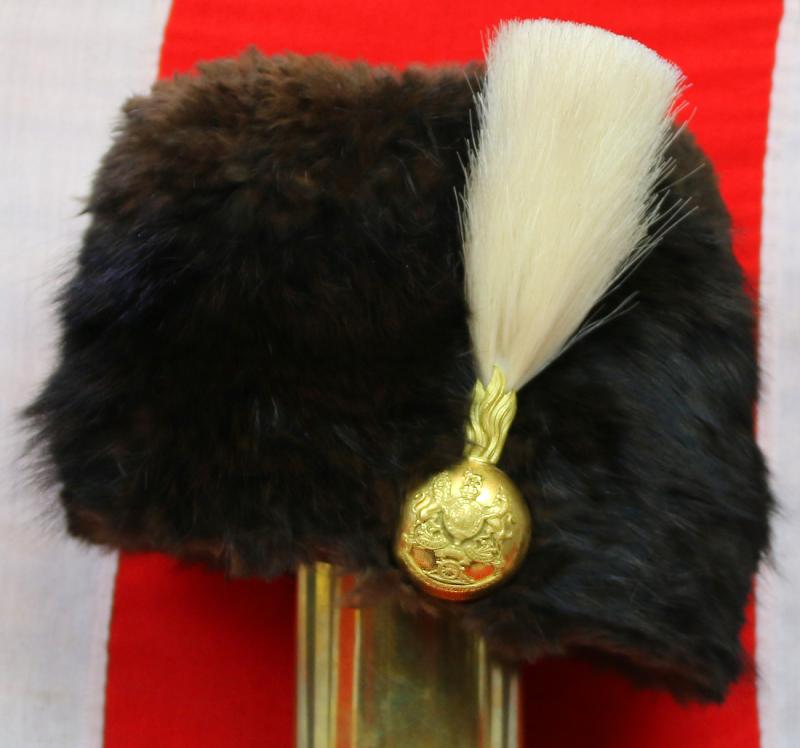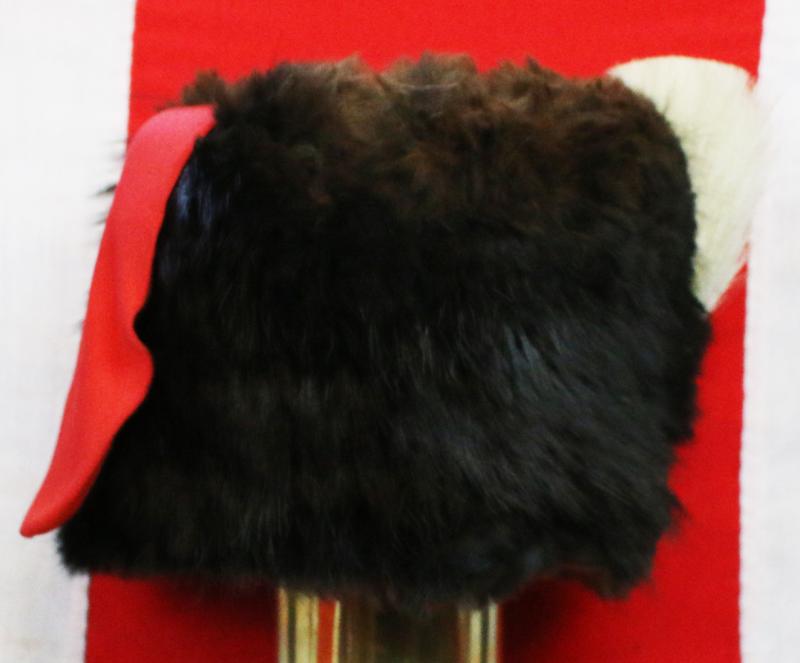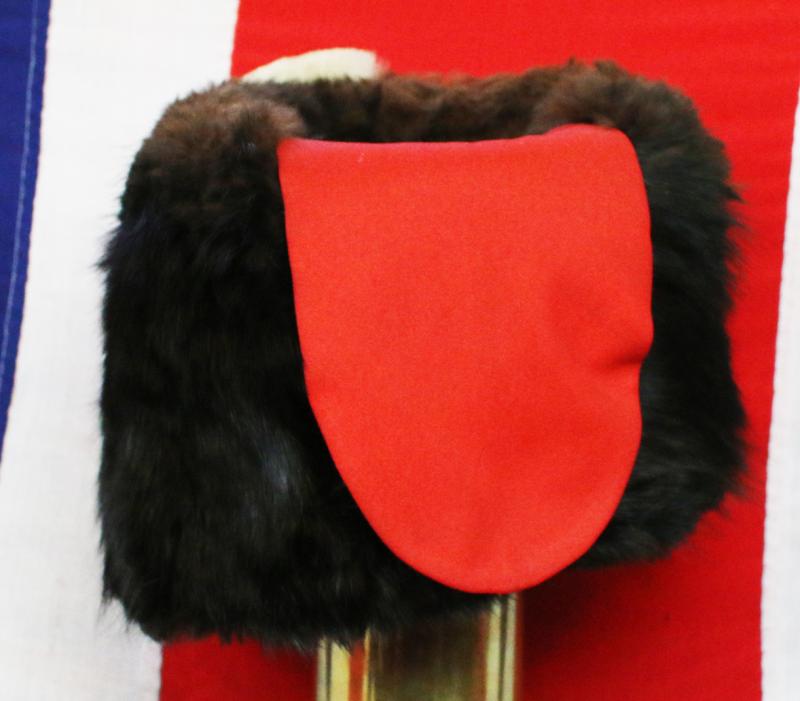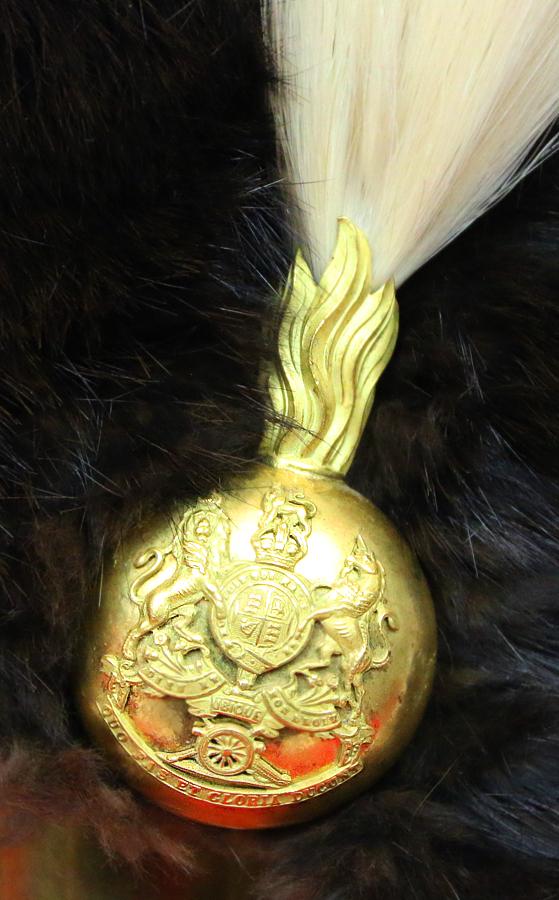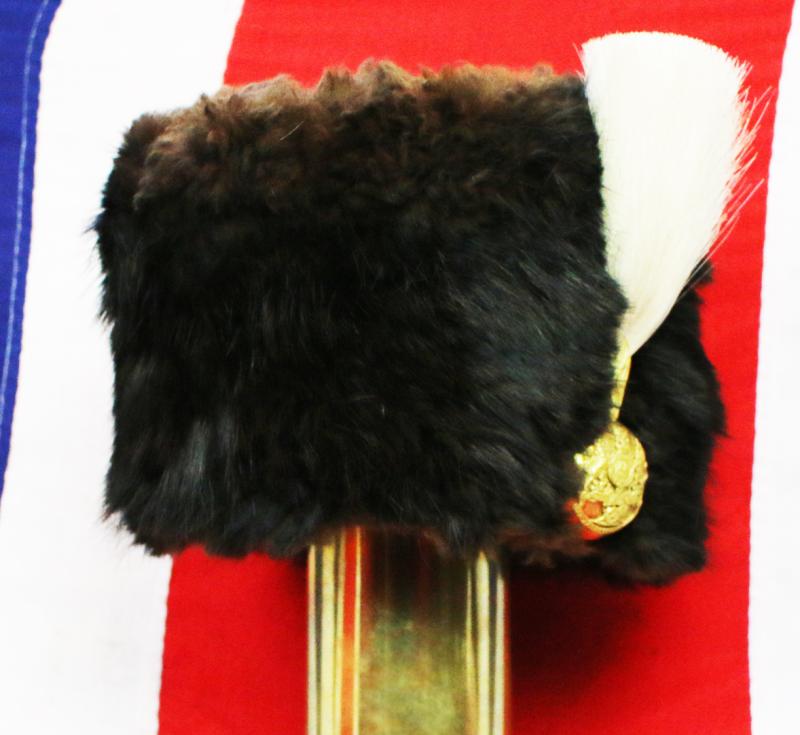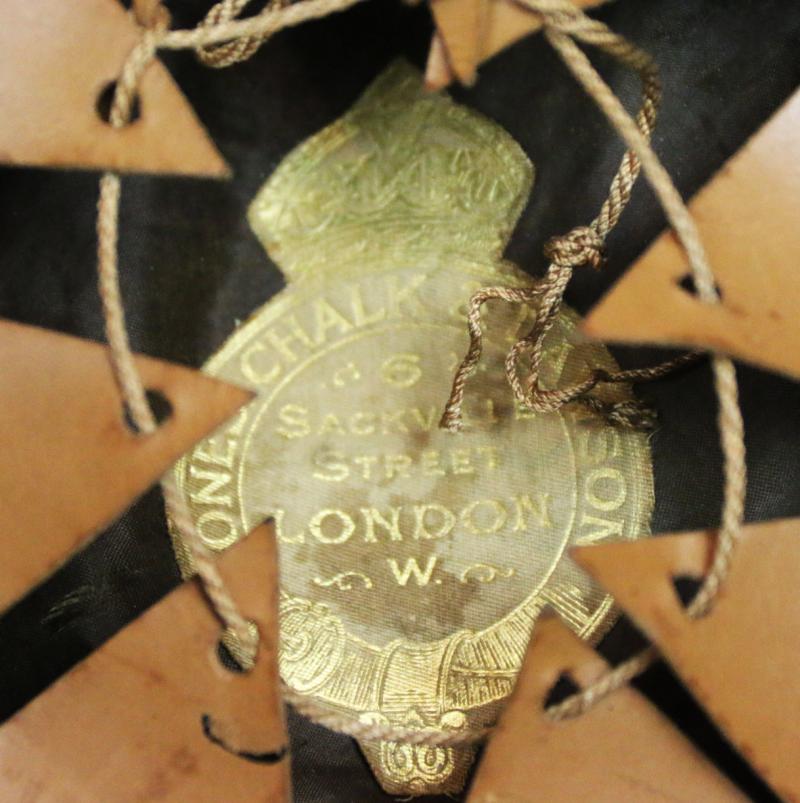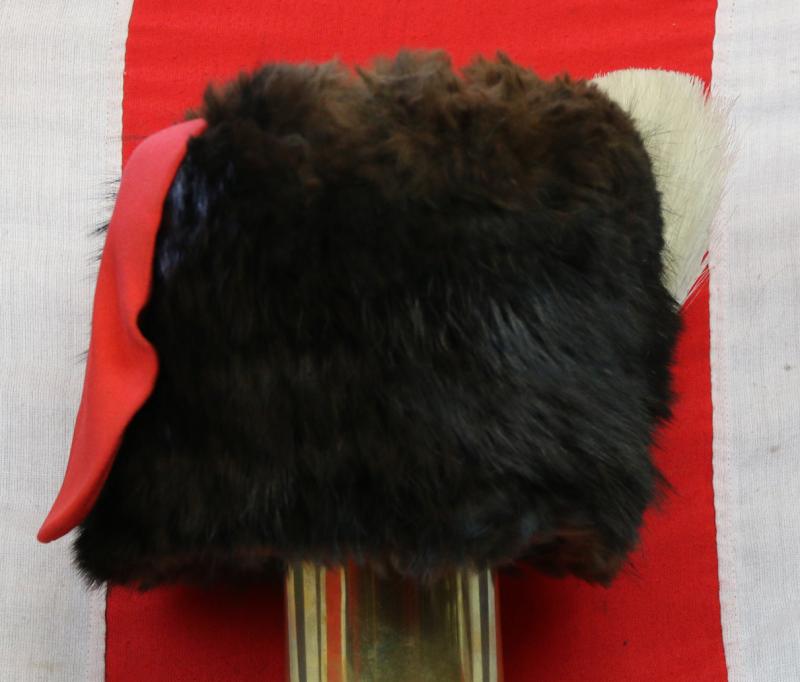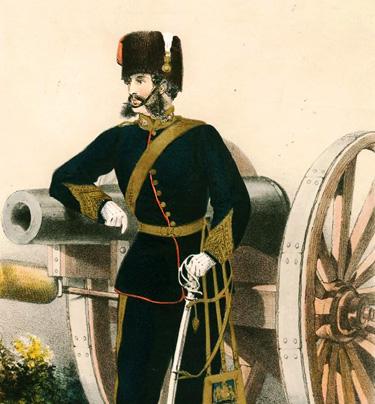A Superb Boer War Period Royal Artillery Officer's Sable Busby With Near Mint Gilt Grenade Plume Holder With Royal Crested Badge of the Royal Artillery.
It still has the original leather lining with maker name in a gilt and leather seal, that reads; Jones Chalk and Dawson 6 Sackville St. London
The busby retains the original black leather chin strap gilt Royal Artillery coat of arms on gilt grenade helmet plate which is worn over the left ear together with the white horsehair brush plume. Finally the Busby has the rich red "bag" which hangs down the soldier's right side of the helmet. Officer helmets are always in very short supply and are sought for, but Sable helmets in this truly nice condition come along very infrequently.
The Second Boer War saw attempted application of bombardment as an alternative to the use of ground forces. In most battles fought during the conflict this was proved not to be possible. There was competition from the other side's ability to undertake evasive measures. The opponent was able to use cover to protect himself and hide his position. Nonetheless, the tactic of the creeping barrage, used at the Relief of Ladysmith, has been described as "revolutionary"
At the outbreak of the war the British army had some 100 guns available of which only twenty-seven were standard field artillery pieces of a reasonably modern design. The Royal Navy was able to contribute seven 12-pounders carried for use ashore. The rest had to be improvised and, as a result of the resourcefulness of Captain Percy Scott, shipboard 12-pounders, known as Long 12s, and 4.7-inch guns were given emergency carriages or mounts and rushed to the front. The defence of Ladysmith thus became possible. In the course of the war the Royal Field Artillery’s 15-pounders were augmented by another 322 guns, fifty Pom-Poms, eighteen 5-inch breech-loaders, thirty-nine 5-inch howitzers and twelve 6-inch guns. The Royal Horse Artillery brought out seventy-eight 12-pounders. Almost all these were out-ranged by Boer weapons of similar type. Furthermore, the British use of field artillery had to undergo a radical revision from the approved tactics that lost the guns at the Battle of Colenso to the fire-from-concealment approach that proved effective at the Battle of Magersfontein. In addition, new methods of coordinating artillery support and infantry movement had to be developed.
Royal Artillery in the Boer War;
Howitzer Batteries. These guns form part of the siege train sent out to South Africa under command of Lieutenant Colonel Perrott, and are engines of enormous destructive power. The howitzer is an old weapon newly introduced with far higher qualities than it ever possessed before. There are several calibres of the siege howitzer, that depicted being the 6-in. breech-loader, weighing 30-cwt., and when limbered up scaling nearly 4.5 tons in draught. The gun fires lyddite shrapnel, the shell complete weighing nearly 70-lb, and having a range of something like 10 miles. The breech mechanism is analogous to that of the field gun, with am interrupted screw, and buffers are provided to take the recoil. A vast amount of material accompanies a siege battery, ammunition being supplied to the extent of 500 rounds per gun, and the work of transport becomes therefore one of great difficulty. But it is in the hands of officers and men who thoroughly competent to undertake it. a siege train is, of course, the artillery formed for the reduction of fortified places. Such a train has nearly always to be organised specially for its particular purpose, and it rarely has any existence in peace-time. Thus when the war broke out the work of organising the siege train began, and the new siege material supplied was soon afloat, and reached South Africa in charge of a highly-trained force of experienced officers and men.
Siege train officers. In all about 32 officers, and over 1,100 men, drawn chiefly from Portsmouth, Plymouth, Exeter, and Devonport, are with the siege train in South Africa. They know the work thoroughly, and are all under command of Lieutenant-Colonel Perrott, Captain and Adjutant Currie, and Captain De Brett, DSO, Major Allen, Major Nicholls, and Captain Strange. These are the principal officers to whom the highly-important duties of the siege train are assigned, but the full exercise of their activity and experience will come later on in the war, when the time arrives for crushing the final opposition of the Boers. Meanwhile, however, the officers of the siege train have been very well employed.
Ammunition Column. These are representative types of the men who are concerned in the transport and distribution of ammunition. They are the sergeant-major, the gunner, the trumpeter, the sergeant, and the driver, and all are armed with revolvers, and certain of them with swords and rifles. There are two classes of ammunition columns. The first is attached to every division, as well as to the Corps Artillery and to the corps troops attached to the Army Corps, and brings up the ammunition reserve for all arms, the ammunition waggons feeding the batteries, and the small-arm carts supplying the infantry, while there are reserve waggons and carts for both. The other class of ammunition columns forms the ammunition parks, which consist of three sections, and are intended for the supply of the whole Army Corps and the cavalry brigades.
Formerly in the Roy Butler Collection.
Code: 25756
795.00 GBP

